In a previous blog I spoke of ancient Egyptians and how they mummified their pharaohs (http://anthropologicalconcepts.weebly.com/blog/-are-you-my-mummy), and briefly spoke of how the elements could mummify dead bodies. That said, why do we not have mummified Australopithecus or Neanderthals? In the following blog I will discuss how the environment has to be just right to mummify or to fossilize.
The most famous case of mummification is in ancient Egypt, but that was a process that took much time. In several cases there is such a thing as accidental mummification. An example of this accidental mummification are the “Greenland Mummies.” In 1972 a group of a six month old baby, a two year old boy, and six women were found in a shallow cave, and three women found in a second grave that dated back to 1475 c.e. It seemed to be meant as a mass family grave because after their DNA was studied it was found that all, except one, were related (it is theorized the one that did not have DNA in common was family by marriage). All of who was buried were dead before placed there, that is everyone but the six month old baby (image below), who "was found to have Down’s Syndrome and may have been left out to die of exposure because of his condition," also his mother had died earlier, so there was no one to watch over him. These bodies were mummified naturally by two factors. First was the temperature, which was sub-zero, and second were the winds. When there is wind in sub-zero temperatures it is a dry, dehydrating wind (image below). So, in a sense, the six month baby was mummified alive. In my blog about human soap (http://anthropologicalconcepts.weebly.com/blog/-human-soap), I described how bog bodies are formed. They are another example of accidental mummification.
The most famous case of mummification is in ancient Egypt, but that was a process that took much time. In several cases there is such a thing as accidental mummification. An example of this accidental mummification are the “Greenland Mummies.” In 1972 a group of a six month old baby, a two year old boy, and six women were found in a shallow cave, and three women found in a second grave that dated back to 1475 c.e. It seemed to be meant as a mass family grave because after their DNA was studied it was found that all, except one, were related (it is theorized the one that did not have DNA in common was family by marriage). All of who was buried were dead before placed there, that is everyone but the six month old baby (image below), who "was found to have Down’s Syndrome and may have been left out to die of exposure because of his condition," also his mother had died earlier, so there was no one to watch over him. These bodies were mummified naturally by two factors. First was the temperature, which was sub-zero, and second were the winds. When there is wind in sub-zero temperatures it is a dry, dehydrating wind (image below). So, in a sense, the six month baby was mummified alive. In my blog about human soap (http://anthropologicalconcepts.weebly.com/blog/-human-soap), I described how bog bodies are formed. They are another example of accidental mummification.
Now in my mummy blog I said “When you live in a country where most of it is dry and sandy, it is very easy to get mummified by the elements,” of which I was speaking of Africa. It is easy to get distracted from the Africa in our recorded history and to think that it has always been the way. If it had always been that way, then all the fossils that are not found in the deserts or dry environments would have been mummified, so...how? Well, the key words that I have just said “our recorded history.” The history of which the fossils of early hominids that were fossilized came from a more fertile Africa. There are many fish, plant, animal, and hominid fossils in areas in which are now just sand. This means it had to have been just right for these fossils to form. For a fossil to form you need for the organism to be buried quickly under sand, earth, mud, or volcanic ash. Once buried, and as time passes, layer after layer of earth is accumulated (this is where stratigraphy comes in), and before you know it, a million years have passed, and they are being excavated by paleontologists or paleoanthropologists if they are hominid (paleontologists study extinct animals, while paleoanthropologists study human evolution). “The heat and pressure from being buried in sediment can sometimes cause the tissues of organisms — including plant leaves and the soft body parts of fish, reptiles and marine invertebrates — to release hydrogen and oxygen, leaving behind a residue of cardon” (and this is where carbon dating comes in).
But what happened to all of our evolutionary ancestors that they were able to be fossilized? They could have drowned and their body deposited in the water bed covered by sediment (this one is ideal), they could have suffocated on ash during a volcanic eruption, or just buried (there is evidence that pre-historic hominids buried their dead). That said, most of the dead we have buried through the ages probably have begun to fossilize (the caskets rot away leaving the body, or what is left of it, to the earth).Yet, even though mummification and fossilization look completely different in the outcome, they are in the end, fossilized.
Please feel free to comment on what you thought of the blog, or other physical anthropological subjects you would like me to cover.
But what happened to all of our evolutionary ancestors that they were able to be fossilized? They could have drowned and their body deposited in the water bed covered by sediment (this one is ideal), they could have suffocated on ash during a volcanic eruption, or just buried (there is evidence that pre-historic hominids buried their dead). That said, most of the dead we have buried through the ages probably have begun to fossilize (the caskets rot away leaving the body, or what is left of it, to the earth).Yet, even though mummification and fossilization look completely different in the outcome, they are in the end, fossilized.
Please feel free to comment on what you thought of the blog, or other physical anthropological subjects you would like me to cover.
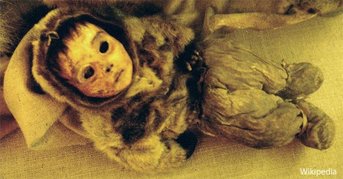
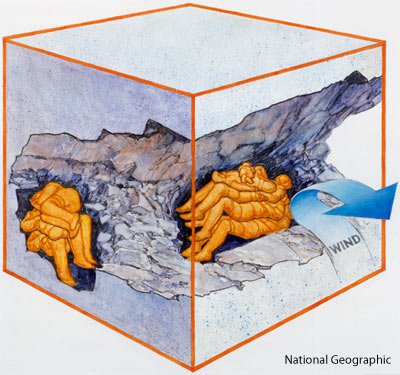
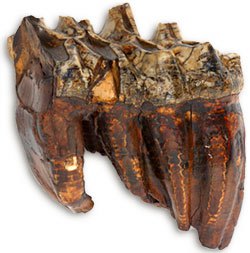


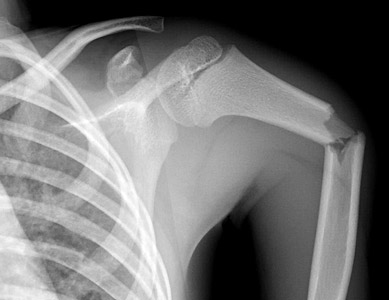


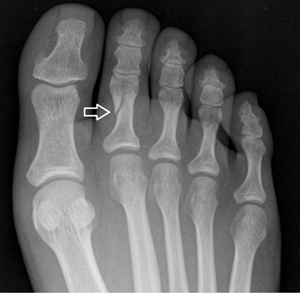
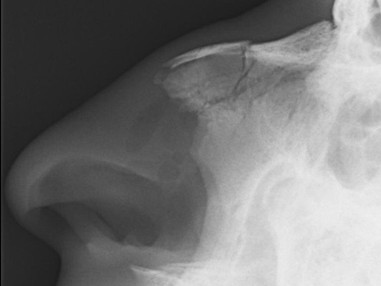

 RSS Feed
RSS Feed
